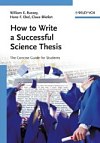 Cellulite is of growing concern to a huge number of women and many consider different ways of reducing it including bariatric surgery or a tummy tuck liposuction procedure, diets and other methods, while others really couldn’t care less about the superficial dimpling of their subcutaneous fat. Moreover, it provides yet another example of the medicalisation of a perfectly harmless “condition” as exemplified by the description of “sufferers” as patients.
Cellulite is of growing concern to a huge number of women and many consider different ways of reducing it including bariatric surgery or a tummy tuck liposuction procedure, diets and other methods, while others really couldn’t care less about the superficial dimpling of their subcutaneous fat. Moreover, it provides yet another example of the medicalisation of a perfectly harmless “condition” as exemplified by the description of “sufferers” as patients.
But, recent research into weight loss and its effects on so-called cellulite is making a big splash. Losing weight can reduce the appearance of cellulite for some women, according to research undertaken by plastic surgeon John Kitzmiller and colleagues. But, here’s the rub, weight loss could make the condition much worse for others.
About 85% of women (that’s 8.5 women in every ten ;-) are affected by cellulite, Kitzmiller claims, “Cellulite is not specific to overweight people, but excess weight may worsen the condition. We found that weight loss in overweight patients improved the appearance of cellulite, but for a few, it actually worsened the condition.”
He examined 29 women [not the biggest most statistically significant sample] who enrolled in medically supervised weight loss programs including low-fat meals, liquid diets, medication, and bariatric surgery. Seventeen patients experienced an improvement in the appearance of their cellulite, while 9 worsened. The average weight loss was 30.5 pounds (range 2.3 — 102 pounds).
Those women who lost most weight and reduced their thigh fat too saw the greatest reduction in cellulite. These patients had a significantly higher starting body mass index (BMI) and had more severe cellulite on average. “Patients” whose cellulite worsened started with a significantly lower BMI, lost smaller amounts of weight, and had no change in percentage of thigh fat.
“There is no answer for completely eliminating cellulite, however, it appears the more weight one loses, the better its appearance,” explains Kitzmiller. “Although the appearance of cellulite diminished for the majority of patients, weight loss did not totally eradicate the condition. The dimples appear to be permanent features that lessen in depth as the pounds come off.”
Needless to say the cosmetic industry and plastic surgeons the world over will be rubbing their hands with glee at Kitzmiller’s revelations. Meanwhile, those women who should be reducing their weight for genuine health reasons who are looking for another reason to procrastinate may find the study most useful in providing them with another reason to put off that new fitness regime and low-cal diet.


 Cellulite is of growing concern to a huge number of women and many consider different ways of reducing it including bariatric surgery or a tummy tuck liposuction procedure, diets and other methods, while others really couldn’t care less about the superficial dimpling of their subcutaneous fat. Moreover, it provides yet another example of the medicalisation of a perfectly harmless “condition” as exemplified by the description of “sufferers” as patients.
Cellulite is of growing concern to a huge number of women and many consider different ways of reducing it including bariatric surgery or a tummy tuck liposuction procedure, diets and other methods, while others really couldn’t care less about the superficial dimpling of their subcutaneous fat. Moreover, it provides yet another example of the medicalisation of a perfectly harmless “condition” as exemplified by the description of “sufferers” as patients. 


